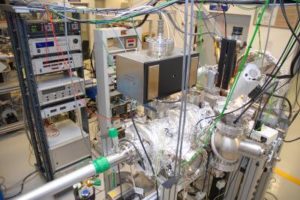red planet
Measuring radiation exposure for a journey to Mars
The Radiation Assessment Detector, the first instrument on NASA’s next rover mission to Mars to begin science operations, was powered up and began collecting data Dec. 6, almost two weeks ahead of schedule. RAD is the only instrument scheduled to colle…
Alien bugs here on Earth?
 A tough microbe called Deinococcus radiodurans can withstand blasts of radiation, enduring several thousand times the lethal dose for humans. How did these little bugs develop this resistance? A team of Russian scientists has concluded that these extraordinary organisms are actually Martian microbes, here on Earth by way of meteorites. In tests on common bacteria E. coli, the scientists determined that evolution of radiation-resistance would take longer than 3.8 billion years, the time that life has been on Earth. In contrast, the bugs could develop this characteristic on the Red Planet in only a few hundred thousand years. On Mars there are much higher levels of radiation and the planet experiences regular climate swings that would induce dormancy in microbes, allowing them to accumulate sufficient doses of radiation to evolve into radiation-resistant critters.
A tough microbe called Deinococcus radiodurans can withstand blasts of radiation, enduring several thousand times the lethal dose for humans. How did these little bugs develop this resistance? A team of Russian scientists has concluded that these extraordinary organisms are actually Martian microbes, here on Earth by way of meteorites. In tests on common bacteria E. coli, the scientists determined that evolution of radiation-resistance would take longer than 3.8 billion years, the time that life has been on Earth. In contrast, the bugs could develop this characteristic on the Red Planet in only a few hundred thousand years. On Mars there are much higher levels of radiation and the planet experiences regular climate swings that would induce dormancy in microbes, allowing them to accumulate sufficient doses of radiation to evolve into radiation-resistant critters.





